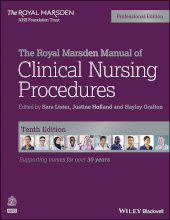Chapter 17: Vascular access devices: insertion and management
Skip chapter table of contents and go to main content

Evidence‐based approaches
The Royal Marsden Manual Online edition provides up-to-date, evidence- based clinical skills and procedures related to essential aspects of a person’s care.






